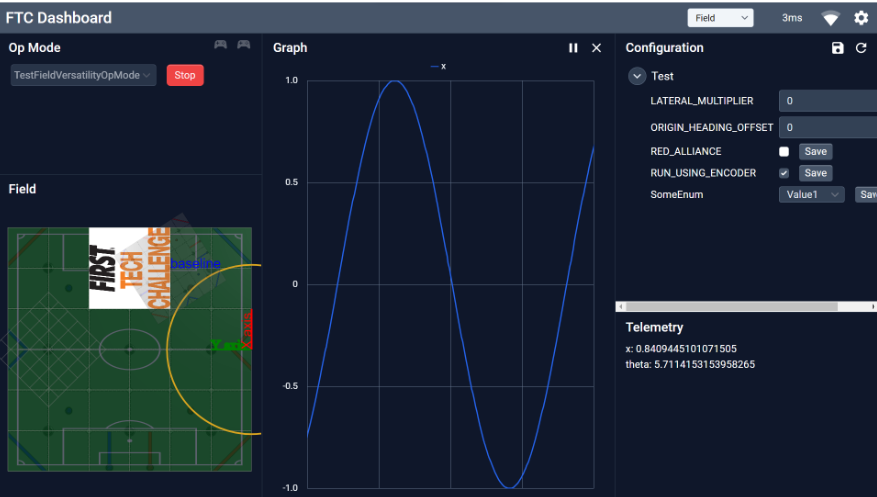FTC Dashboard Field Versatility Update
Tags: connect and controlPersonhours: 28
Task: Update FTC Dashboard to better suit our needs

During our PowerPlay season, we used FTC Dashboard extensively. However, because of some suboptimal code and some limitations of the platform, we were unable to use it to its full potential, especially in regard to the Field View component. We contributed to the repository with some quality-of-life changes that impact the hundreds of FTC teams that use Dashboard.
What is Dashboard?
FTC Dashboard is an open-source repository at https://github.com/acmerobotics/ftc-dashboard. It’s a tool that creates a webserver on your Control Hub and opens up a port that any web browser can connect to. Once it’s up and running, you can use it to visualize telemetry with plots and graphs, edit configuration variables, view feed from the camera, run op modes, and visualize your robot in the context of the field, all live.
Why’d we change it?
During our PowerPlay season, we had conflicting origins used by FTC Dashboard’s field visualization, RoadRunner, and our native pathing solution, which led to headaches and near-impossible navigation debugging. This season, we’ve committed fully to RoadRunner’s navigation system, but the lack of flexible origin and origin heading in the field visualization component was a hurdle for our development.

Because of this, we set out to implement a setTranslation() function to make development with dashboard much more flexible. It was a bit more ambitious than we’d initially thought, though, and we needed to speak to the original author, Ryan Brott, to truly understand the inner workings of dashboard.
Once we got setOrigin() working, however, we understood the true potential of this field visualization tool. We implemented support for image drawing, text drawing, scaling, transparency changes, editing the grid lines, and more.

Next Steps
Ultimately, we’ve succeeded in making an incredibly useful tool even more useful, and many of these changes are incredibly convenient for tons of our fellow FTC teams. We also always love the opportunity to give back to the community and contribute to the libraries that are lifesavers for teams like us. We’re looking forward to making more open-source contributions to make FTC more accessible for everyone.
